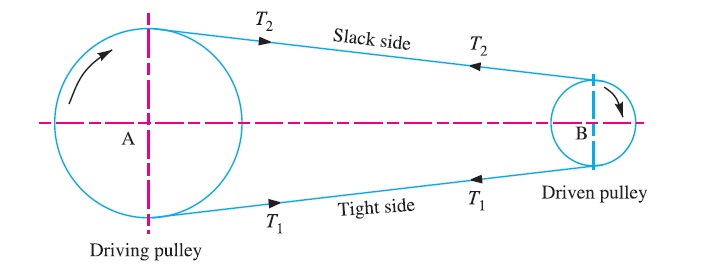Power Transmitted by a Belt
Fig. 1 shows the driving pulley (or driver) A and the driven pulley (or follower) B. As already discussed, the driving pulley pulls the belt from one side and delivers it to the other side. It is thus obvious that the tension on the former side (i.e. tight side) will be greater than the latter side (i.e. slack side) as shown in Fig. 1.

Let T1 and T2 = Tensions in the tight side and slack side of the belt respectively in newtons,
r1 and r2 = Radii of the driving and driven pulleys respectively in metres,
and ν = Velocity of the belt in m/s.
The effective turning (driving) force at the circumference of the driven pulley or follower is the difference between the two tensions (i.e. T1 – T2).

∴ Work done per second = (T1 – T2) ν N-m/s
and power transmitted = (T1 – T2) ν W …………………………. (Q 1 N-m/s = 1W)
A little consideration will show that torque exerted on the driving pulley is (T1 – T2) r1.
Similarly, the torque exerted on the driven pulley is (T1 – T2) r2.











Post Comment
You must be logged in to post a comment.